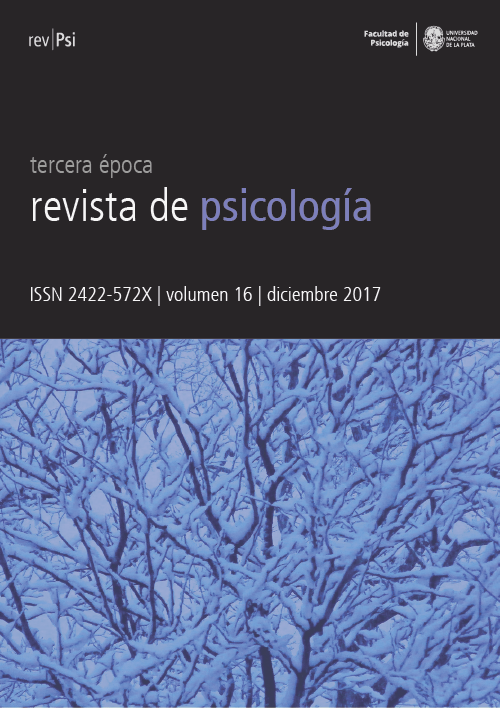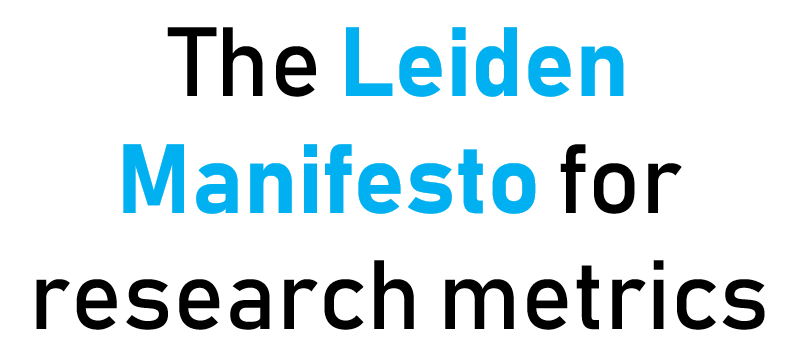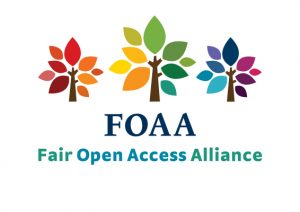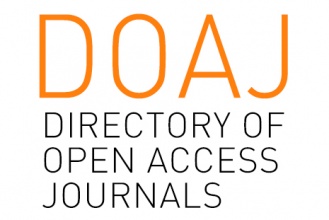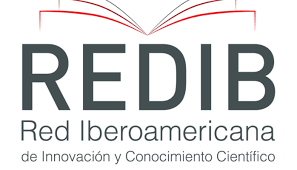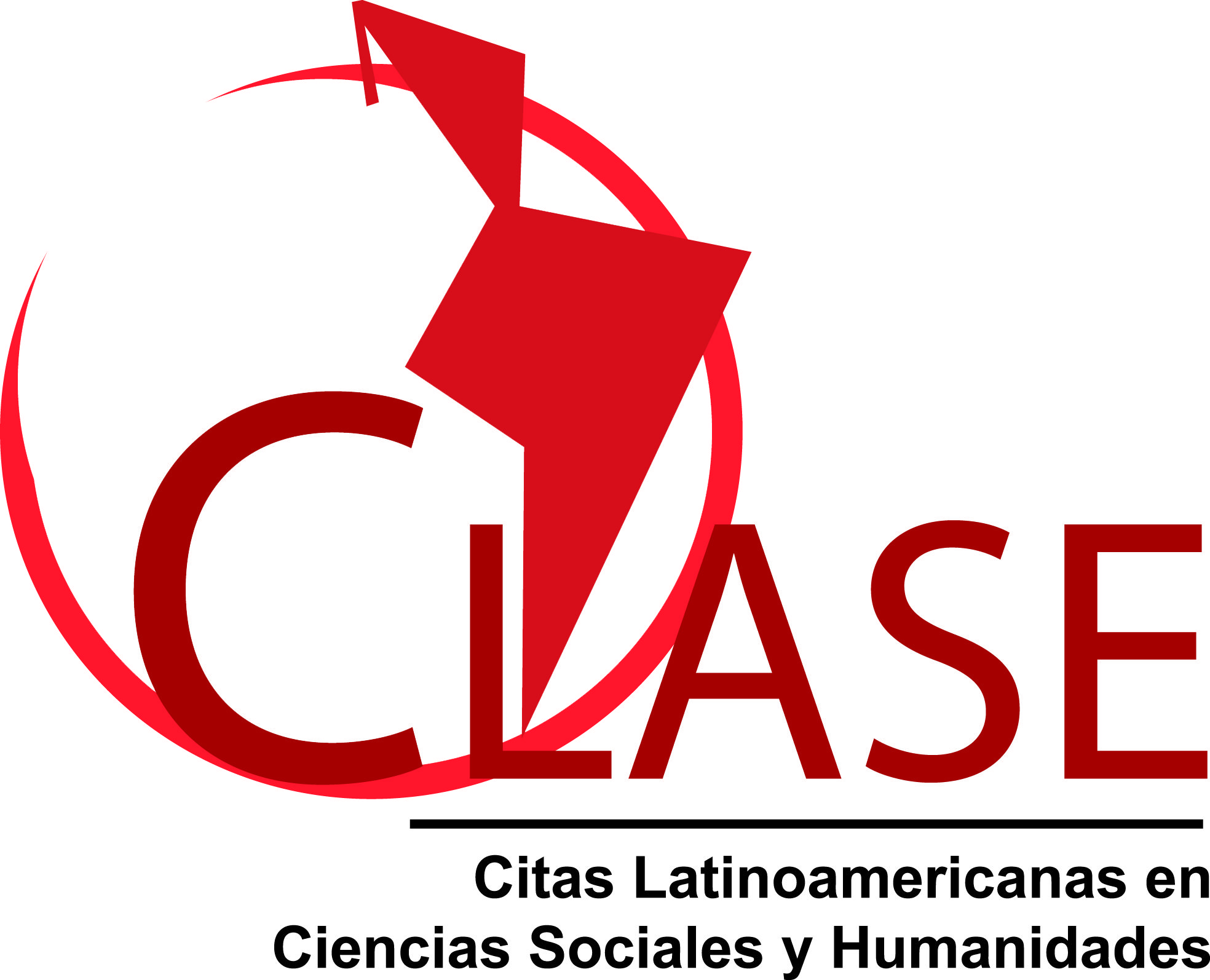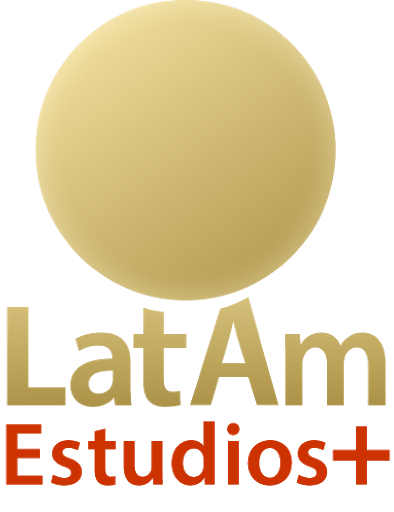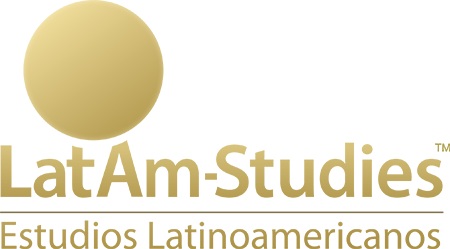Perspectivas neurobiológicas para explicar el autismo: una revisión sistemática de literatura
DOI:
https://doi.org/10.24215/2422572Xe006Palabras clave:
neurobiología, autismo, psicopatología infanto-juvenil, revisión sistemáticaResumen
En este artículo se abordan las perspectivas neurobiológicas para explicar el autismo a partir de una revisión sistemática de literatura académica. Partimos de considerar a la neurobiología como un campo complejo que estudia los aspectos anátomo-fisiológicos del sistema nervioso central. En vinculación con el autismo, reconocemos dentro de este campo cuatro perspectivas principales: i) la perspectiva neuroanatómica, ii) la perspectiva neurosocial, iii) la perspectiva genética y iv) la perspectiva neuroquímica. Luego de desarrollar cada una, analizamos posibles compatibilidades, yuxtaposiciones y contraposiciones entre ellas.
Referencias
Acosta, J., Guzmán, G., Sesarini, C., Pallia, R. y Quiróz, N. (2006). Introducción a la neurobiología y neurofisiología del Trastorno del Espectro Autista. Revista Chilena de Neuropsicología, 11(2), 28-33. https://doi.org/10.5839/rcnp.2016.11.02.05
Alessandroni, N., Vietri, M. y Krasutzky, I. (2017). Atribución de estados mentales y autismo: desarrollos teóricos y controversias actuales. En M. C. Piro (Ed.), El autismo: perspectivas teórico-clínicas y desafíos contemporáneos (pp. 103-150). La Plata: EDULP - Editorial de la Universidad Nacional de La Plata.
Álvaro-González, L. C. (2015). El cerebro social: bases neurobiológicas de interés clínico. Revista de Neurología, 61(10), 458-470.
Amaral, D. G., Schumann, C. M. y Nordahl, C. W. (2008). Neuroanatomy of autism. Trends in Neurosciences, 31(3), 137-145. https://doi.org/10.1016/j.tins.2007.12.005
Andari, E., Duhamel, J.-R., Zalla, T., Herbrecht, E., Leboyer, M. y Sirigu, A. (2010). Promoting social behavior with oxytocin in high-functioning autism spectrum disorders. Proceedings of the National Academy of Sciences, 107(9), 4389-4394. https://doi.org/10.1073/pnas.0910249107
Aoki, Y., Yahata, N., Watanabe, T., Takano, Y., Kawakubo, Y., Kuwabara, H., … Yamasue, H. (2014). Oxytocin improves behavioural and neural deficits in inferring others’ social emotions in autism. Brain, 137(11), 3073-3086. https://doi.org/10.1093/brain/awu231
Asperger, H. (1944). Die “Autistischen Psychopathen” im Kindesalter [Psicopatía autística en la infancia]. Archiv für Psychiatrie und Nervenkrankheiten, 117, 76-136.
Baron-Cohen, S. (2005). Sex differences in the brain: Implications for explaining autism. Science, 310(5749), 819-823. https://doi.org/10.1126/science.1115455
Baron-Cohen, Simon. (2002). The extreme male brain theory of autism. Trends in Cognitive Sciences, 6(6), 248-254. https://doi.org/10.1016/S1364-6613(02)01904-6
Baron-Cohen, Simon. (2004). Autism: research into causes and intervention. Pediatric Rehabilitation, 7(2), 73-78. https://doi.org/10.1080/13638490310001654790
Baron-Cohen, Simon. (2010). Empathizing, systemizing, and the extreme male brain theory of autism. Progress in Brain Research, 186, 167-175. https://doi.org/10.1016/B978-0-444-53630-3.00011-7
Baron-Cohen, Simon y Hammer, J. (1997). Is autism an extreme form of the «male brain»? Advances in Infancy Research, 11, 193-217.
Baron-Cohen, Simon, Lombardo, M. V., Auyeung, B., Ashwin, E., Chakrabarti, B. y Knickmeyer, R. (2011). Why are autism spectrum conditions more prevalent in males? PLoS Biology, 9(6), e1001081. https://doi.org/10.1371/journal.pbio.1001081
Barttfeld, P., Amoruso, L., Ais, J., Cukier, S., Bavassi, L., Tomio, A., … Sigman, M. (2013). Organization of brain networks governed by long-range connections index autistic traits in the general population. Journal of Neurodevelopmental Disorders, 5(1), 16. https://doi.org/10.1186/1866-1955-5-16
Bauman, M. L. y Kemper, T. L. (2005). The neurobiology of autism (2.ª ed.). Baltimore: Johns Hopkins University Press.
Betancur, C. (2011). Etiological heterogeneity in autism spectrum disorders: More than 100 genetic and genomic disorders and still counting. Brain Research, 1380, 42-77. https://doi.org/10.1016/j.brainres.2010.11.078
Blanken, L. M. E., Mous, S. E., Ghassabian, A., Muetzel, R. L., Schoemaker, N. K., El Marroun, H., … White, T. (2015). Cortical morphology in 6- to 10-year old children with autistic traits: A population-based neuroimaging study. American Journal of Psychiatry, 172(5), 479-486. https://doi.org/10.1176/appi.ajp.2014.14040482
Brothers, L. (2002). The social brain: a project for integrating primate behavior and neurophysiology in a new domain. En J. T. Cacioppo, G. G. Berntson, R. Adolphs, C. S. Carter, R. J. Davidson, M. McClintock, … S. E. Taylor (Eds.), Foundations in social neuroscience (pp. 367-385). Cambridge: The MIT Press.
Cabrera, D. (2007). Generalities about autism. Revista Colombiana de Psiquiatría, 36(1), 208-220.
Cadaveira, M. y Waisburg, C. (2014). Autismo: guía para padres y profesionales. Ciudad Autónoma de Buenos Aires: Paidós.
Carper, R. A., Treiber, J. M., White, N. S., Kohli, J. S. y Müller, R.-A. (2017). Restriction spectrum imaging as a potential measure of cortical neurite density in autism. Frontiers in Neuroscience, 10, 610. https://doi.org/10.3389/fnins.2016.00610
CDC – Centers for Disease Control and Prevention. (2014). Autism Spectrum Disorder (ASD). Data & statistics. Recuperado a partir de http://www.cdc.gov/ncbddd/autism/data.html
Chen, J. A., Peñagarikano, O., Belgard, T. G., Swarup, V. y Geschwind, D. H. (2015). The emerging picture of Autism Spectrum Disorder: Genetics and pathology. Annual Review of Pathology: Mechanisms of Disease, 10(1), 111-144. https://doi.org/10.1146/annurev-pathol-012414-040405
Clipperton-Allen, A. E., Chen, Y. y Page, D. T. (2016). Autism-relevant behaviors are minimally impacted by conditional deletion of Pten in oxytocinergic neurons: Conditional deletion of Pten in Oxt cells. Autism Research, 9(12), 1248-1262. https://doi.org/10.1002/aur.1641
Courchesne, E., Carper, R. y Akshoomoff, N. (2003). Evidence of brain overgrowth in the first year of life in autism. Journal of the American Medical Association, 290(3), 337-344. https://doi.org/10.1001/jama.290.3.337
Cukier, S. H. (2005). Aspectos clínicos, biológicos y neuropsicológicos del trastorno autista: hacia una perspectiva integradora. Revista Argentina de Psiquiatría, 16(62), 273-278.
De la Torre-Ubieta, L., Won, H., Stein, J. L. y Geschwind, D. H. (2016). Advancing the understanding of autism disease mechanisms through genetics. Nature Medicine, 22(4), 345-361. https://doi.org/10.1038/nm.4071
Di Martino, A., Yan, C.-G., Li, Q., Denio, E., Castellanos, F. X., Alaerts, K., … Milham, M. P. (2014). The autism brain imaging data exchange: towards a large-scale evaluation of the intrinsic brain architecture in autism. Molecular Psychiatry, 19(6), 659-667. https://doi.org/10.1038/mp.2013.78
DiCicco-Bloom, E., Lord, C., Zwaigenbaum, L., Courchesne, E., Dager, S. R., Schmitz, C., … Young, L. J. (2006). The developmental neurobiology of Autism Spectrum Disorder. Journal of Neuroscience, 26(26), 6897-6906. https://doi.org/10.1523/JNEUROSCI.1712-06.2006
Domes, G., Heinrichs, M., Kumbier, E., Grossmann, A., Hauenstein, K. y Herpertz, S. C. (2013). Effects of intranasal oxytocin on the neural basis of face processing in Autism Spectrum Disorder. Biological Psychiatry, 74(3), 164-171. https://doi.org/10.1016/j.biopsych.2013.02.007
Dunbar, R. I. (1998). The social brain hypothesis. Brain, 9(10), 178-190. https://doi.org/10.1002/(SICI)1520-6505
Escera, C. (2004). Aproximación histórica y conceptual a la neurociencia cognitiva. Cognitiva, 16(2), 141-161. https://doi.org/10.1174/0214355042248929
Espín Jaime, J. C., Cerezo Navarro, M. V. y Espín Jaime, F. (2013). Lo que es Trastorno del Espectro Autista y lo que no lo es. Anales de Pediatría Continuada, 11(6), 333-341.
Fariña, L., Galli, E., Lazo, M., Mattei, L. y Raggio, V. (2015). Genética molecular y trastornos del espectro autista. Anales de la Facultad de Medicina, 2, 9-21.
Folstein, S. y Rutter, M. (1977). Genetic influences and infantile autism. Nature, 265(5596), 726-728. https://doi.org/10.1038/265726a0
Fuccillo, M. V. (2016). Striatal circuits as a common node for autism pathophysiology. Frontiers in Neuroscience, 10. https://doi.org/10.3389/fnins.2016.00027
Garcés-Vieira, M. V. y Suárez-Escudero, J. C. (2012). Neuroplasticidad: aspectos bioquímicos y neurofisiológicos. Revista CES Medicina, 28(1), 119-132.
García, R., Ayala, P. A. y Perdomo, S. P. (2012). Epigenética: definición, bases moleculares e implicaciones en la salud y en la evolución humana. Revista Ciencias de la Salud, 10(1), 59-71.
Gazzaniga, M. S. (2009). The cognitive neurosciences. Cambridge: The MIT Press.
Geschwind, D. H. y State, M. W. (2015). Gene hunting in Autism Spectrum Disorder: on the path to precision medicine. The Lancet Neurology, 14(11), 1109-1120. https://doi.org/10.1016/S1474-4422(15)00044-7
González, B. P. y Menchaca, N. F. (2007). Neurobiología del autismo: estudio de neuropatología y neuroimagen. Actas Españolas de Psiquiatría, 35(4).
Gordon, I., Vander Wyk, B. C., Bennett, R. H., Cordeaux, C., Lucas, M. V., Eilbott, J. A., … Pelphrey, K. A. (2013). Oxytocin enhances brain function in children with autism. Proceedings of the National Academy of Sciences, 110(52), 20953-20958. https://doi.org/10.1073/pnas.1312857110
Hazlett, H. C., Poe, M. D., Gerig, G., Styner, M., Chappell, C., Smith, R. G., … Piven, J. (2011). Early brain overgrowth in autism associated with an increase in cortical surface area before age 2 years. Archives of General Psychiatry, 68(5), 467. https://doi.org/10.1001/archgenpsychiatry.2011.39
Heinrichs, M. y Domes, G. (2008). Neuropeptides and social behaviour: effects of oxytocin and vasopressin in humans. Progress in Brain Research, 170, 337-350. https://doi.org/10.1016/S0079-6123(08)00428-7
Herbert, M. R., Ziegler, D. A., Deutsch, C. K., O’Brien, L. M., Lange, N., Bakardjiev, A., … Caviness, V. S. (2003a). Dissociations of cerebral cortex, subcortical and cerebral white matter volumes in autistic boys. Brain, 126(5), 1182-1192. https://doi.org/10.1093/brain/awg110
Herbert, M. R., Ziegler, D. A., Makris, N., Bakardjiev, A., Hodgson, J., Adrien, K. T., … Caviness, V. S. (2003b). Larger brain and white matter volumes in children with developmental language disorder. Developmental Science, 6(4), F11-F22. https://doi.org/10.1111/1467-7687.00291
Herbert, M. R., Ziegler, D. A., Makris, N., Filipek, P. A., Kemper, T. L., Normandin, J. J., … Caviness, V. S. (2004). Localization of white matter volume increase in autism and developmental language disorder. Annals of Neurology, 55(4), 530-540. https://doi.org/10.1002/ana.20032
Herpertz, S. C. y Bertsch, K. (2014). The social-cognitive basis of personality disorders. Current Opinion in Psychiatry, 27(1), 73-77. https://doi.org/10.1097/YCO.0000000000000026
Hollander, E., Bartz, J., Chaplin, W., Phillips, A., Sumner, J., Soorya, L., … Wasserman, S. (2007). Oxytocin Increases retention of social cognition in autism. Biological Psychiatry, 61(4), 498-503. https://doi.org/10.1016/j.biopsych.2006.05.030
Hollander, E., Novotny, S., Hanratty, M., Yaffe, R., DeCaria, C. M., Aronowitz, B. R. y Mosovich, S. (2003). Oxytocin infusion reduces repetitive behaviors in adults with autistic and Asperger’s disorders. Neuropsychopharmacology, 28(1), 193-198. https://doi.org/10.1038/sj.npp.1300021
Hulbert, Samuel W. y Jiang, Y. (2017). Cellular and circuitry bases of autism: Lessons learned from the temporospatial manipulation of autism genes in the brain. Neuroscience Bulletin, 33(2), 205-218. https://doi.org/10.1007/s12264-017-0112-7
Hulbert, S.W. y Jiang, Y.-H. (2016). Monogenic mouse models of autism spectrum disorders: Common mechanisms and missing links. Neuroscience, 321, 3-23. https://doi.org/10.1016/j.neuroscience.2015.12.040
Hutsler, J. J. y Casanova, M. F. (2016). Cortical construction in autism spectrum disorder: Columns, connectivity and the subplate. Neuropathology and Applied Neurobiology, 42(2), 115-134. https://doi.org/10.1111/nan.12227
IsHak, W. W., Kahloon, M. y Fakhry, H. (2011). Oxytocin role in enhancing well-being: A literature review. Journal of Affective Disorders, 130(1-2), 1-9. https://doi.org/10.1016/j.jad.2010.06.001
Jiao, Y., Chen, R., Ke, X., Chu, K., Lu, Z. y Herskovits, E. H. (2010). Predictive models of autism spectrum disorder based on brain regional cortical thickness. NeuroImage, 50(2), 589-599. https://doi.org/10.1016/j.neuroimage.2009.12.047
Juvenal, G. J. (2014). Epigenética: vieja palabra, nuevos conceptos. Revista Argentina de Endocrinología y Metabolismo, 51(2), 66-74.
Kanner, L. (1943/1993). Autistic disturbances of affective contact. Nervous Child, 2, 217250.
Kaulino, A. y Stecher, A. (Eds.). (2008). Cartografía de la psicología contemporánea. Pluralismo y modernidad. Santiago de Chile: LOM Ediciones.
Kays, J. L., Hurley, R. A. y Taber, K. H. (2012). The dynamic brain: neuroplasticity and mental health. The Journal of Neuropsychiatry and Clinical Neurosciences, 24(1), 118-124. https://doi.org/10.1176/appi.neuropsych.24.1.118
Lai, M.-C., Lombardo, M. V., Auyeung, B., Chakrabarti, B. y Baron-Cohen, S. (2015). Sex/gender differences and autism: Setting the scene for future research. Journal of the American Academy of Child & Adolescent Psychiatry, 54(1), 11-24. https://doi.org/10.1016/j.jaac.2014.10.003
Lai, M.-C., Lombardo, M. V. y Baron-Cohen, S. (2014). Autism. The Lancet, 383(9920), 896-910. https://doi.org/10.1016/S0140-6736(13)61539-1
Lai, M.-C., Lombardo, M. V., Ecker, C., Chakrabarti, B., Suckling, J., Bullmore, E. T., … Baron-Cohen, S. (2015). Neuroanatomy of individual differences in language in adult males with autism. Cerebral Cortex, 25(10), 3613-3628. https://doi.org/10.1093/cercor/bhu211
Leone, A. P. (2009). Characterizing and modulating neuroplasticity of the adult human brain. En M. S. Gazzaniga (Ed.), The cognitive neurosciences (pp. 141-152). Cambridge: The MIT Press.
Levitt, P. y Campbell, D. B. (2009). The genetic and neurobiologic compass points toward common signaling dysfunctions in autism spectrum disorders. Journal of Clinical Investigation, 119(4), 747-754. https://doi.org/10.1172/JCI37934
Liu, Z., Li, X., Zhang, J.-T., Cai, Y.-J., Cheng, T.-L., Cheng, C., … Qiu, Z. (2016). Autism-like behaviours and germline transmission in transgenic monkeys overexpressing MeCP2. Nature, 530(7588), 98-102. https://doi.org/10.1038/nature16533
Lombardi, L. M., Baker, S. A. y Zoghbi, H. Y. (2015). MECP2 disorders: from the clinic to mice and back. Journal of Clinical Investigation, 125(8), 2914-2923. https://doi.org/10.1172/JCI78167
LoParo, D. y Waldman, I. D. (2015). The oxytocin receptor gene (OXTR) is associated with autism spectrum disorder: a meta-analysis. Molecular Psychiatry, 20(5), 640-646. https://doi.org/10.1038/mp.2014.77
Lord, C., Rutter, M. y Le Couteur, A. (1994). Autism diagnostic interview-revised: A revised version of a diagnostic interview for caregivers of individuals with possible pervasive developmental disorders. Journal of Autism and Developmental Disorders, 24(5), 659-685. https://doi.org/10.1007/BF02172145
Maia, L. A. C. R., Da Silva, C. R., Correia, C. R. y Bartolomé, M. V. P. (2006). El modelo de Alexander Romanovich Luria (revisitado) y su aplicación a la evaluación neuropsicológica. Revista Galego-Portuguesa de Psicoloxía e Educación, 11(13), 155-194.
Mannion, A. y Leader, G. (2013). Comorbidity in autism spectrum disorder: A literature review. Research in Autism Spectrum Disorders, 7(12), 1595-1616. https://doi.org/10.1016/j.rasd.2013.09.006
Martins, G. J. (2017). Neurobiology of autism spectrum disorders. En B. Barahona Correa y R. J. van der Gaag (Eds.), Autism spectrum disorders in adults (pp. 29-93). Lisboa: Springer International Publishing.
Meltzer, A. y Van de Water, J. (2017). The role of the immune system in Autism Spectrum Disorder. Neuropsychopharmacology, 42(1), 284-298. https://doi.org/10.1038/npp.2016.158
Miles, J. H. (2011). Autism spectrum disorders—A genetics review. Genetics in Medicine, 13(4), 278-294. https://doi.org/10.1097/GIM.0b013e3181ff67ba
Minshew, N. J. y Payton, J. B. (1988). New perspectives in autism. Part 2: the differential diagnosis and neurobiology of autism. Current Problems in Pediatrics, 18(11), 618-694. https://doi.org/10.1016/0045-9380(88)90017-5
Minshew, N. J., Sweeney, J. A., Bauman, M. L. y Webb, S. J. (2013). Neurologic aspects of autism. En F. R. Volkmar, R. Paul, A. Klin, y D. Cohen (Eds.), Handbook of Autism and Pervasive Developmental Disorders (pp. 473-514). Hoboken: John Wiley & Sons, Inc. https://doi.org/10.1002/9780470939345.ch18
Minshew, N. J. y Williams, D. L. (2007). The new neurobiology of autism: Cortex, connectivity, and neuronal organization. Archives of Neurology, 64(7), 945. https://doi.org/10.1001/archneur.64.7.945
Morant, A., Mulas, F. y Hernández, S. (2001). Bases neurobiológicas del autismo. Neurología Clínica, 2(1), 163-171.
Mulas, F., Etchepareborda, M. C., Hernández, S., Abad, L., Téllez de Meneses, M. y Mattos, L. (2005). Bases neurobiológicas de los trastornos específicos de la comunicación (espectro autista). Neurología, 41(1), S149-S153.
Mullins, C., Fishell, G. y Tsien, R. W. (2016). Unifying views of Autism Spectrum Disorders: A consideration of autoregulatory feedback loops. Neuron, 89(6), 1131-1156. https://doi.org/10.1016/j.neuron.2016.02.017
Nevile, H. y Sur, M. (2009). Introduction. En M. S. Gazzaniga (Ed.), The cognitive neurosciences (p. 89). Cambridge: The MIT Press.
Palau-Baduell, M., Salvadó-Salvadó, B., Clofent-Torrentó, M. y Valls-Santasusana, A. (2012). Autismo y conectividad neural. Revista de Neurología, 54(1), S31-S39.
Pelphrey, K. A., Shultz, S., Hudac, C. M. y Vander Wyk, B. C. (2011). Constraining heterogeneity: the social brain and its development in autism spectrum disorder. Journal of Child Psychology and Psychiatry, 52(6), 631-644. https://doi.org/10.1111/j.1469-7610.2010.02349.x
Piro, M. C. (2015). Las variedades del autismo: su presentación en la demanda asistencial. Temas en Psicología, 2, 13-32.
Pobbe, R. L. H., Pearson, B. L., Defensor, E. B., Bolivar, V. J., Young, W. S., Lee, H.-J., … Blanchard, R. J. (2012). Oxytocin receptor knockout mice display deficits in the expression of autism-related behaviors. Hormones and Behavior, 61(3), 436-444. https://doi.org/10.1016/j.yhbeh.2011.10.010
Rapin, I. y Katzman, R. (1998). Neurobiology of autism. Annals of Neurology, 43(1), 7-14. https://doi.org/10.1002/ana.410430106
Rivière, Á. (2001). Autismo. Orientaciones para la intervención educativa. Madrid: Trotta.
Rotta, N. T. (2013). Trastorno del espectro autista y trastorno específico del lenguaje ¿dos entidades diferentes o un continuo de manifestaciones neuropsicológicas? Medicina, 73(1), 10-15.
Schaer, M., Kochalka, J., Padmanabhan, A., Supekar, K. y Menon, V. (2015). Sex differences in cortical volume and gyrification in autism. Molecular Autism, 6(1). https://doi.org/10.1186/s13229-015-0035-y
Shou, X.-J., Xu, X.-J., Zeng, X.-Z., Liu, Y., Yuan, H.-S., Xing, Y., … Han, J.-S. (2017). A volumetric and functional connectivity MRI study of brain arginine-vasopressin pathways in autistic children. Neuroscience Bulletin, 33(2), 130-142. https://doi.org/10.1007/s12264-017-0109-2
Sierra-Fitzgerald, O. y Munévar, G. (2007). Nuevas ventanas hacia el cerebro humano y su impacto en la neurociencia cognoscitiva. Revista Latinoamericana de Psicología, 39(1), 143-157. https://doi.org/10.14349/rlp.v39i1.625
Sztainberg, Y., Chen, H., Swann, J. W., Hao, S., Tang, B., Wu, Z., … Zoghbi, H. Y. (2015). Reversal of phenotypes in MECP2 duplication mice using genetic rescue or antisense oligonucleotides. Nature, 528(7580), 123-126. https://doi.org/10.1038/nature16159
Sztainberg, Y. y Zoghbi, H. Y. (2016). Lessons learned from studying syndromic autism spectrum disorders. Nature Neuroscience, 19(11), 1408-1417. https://doi.org/10.1038/nn.4420
Tick, B., Bolton, P., Happé, F., Rutter, M. y Rijsdijk, F. (2016). Heritability of autism spectrum disorders: a meta-analysis of twin studies. Journal of Child Psychology and Psychiatry, 57(5), 585-595. https://doi.org/10.1111/jcpp.12499
Urrútia, G. y Bonfill, X. (2010). Declaración PRISMA: una propuesta para mejorar la publicación de revisiones sistemáticas y metaanálisis. Medicina Clínica, 135(11), 507-511. https://doi.org/10.1016/j.medcli.2010.01.015
Wang, M., Li, H., Takumi, T., Qiu, Z., Xu, X., Yu, X. y Bian, W.-J. (2017). Distinct defects in spine formation or pruning in two gene duplication mouse models of autism. Neuroscience Bulletin, 33(2), 143-152. https://doi.org/10.1007/s12264-017-0111-8
Werling, D. M. (2016). The role of sex-differential biology in risk for autism spectrum disorder. Biology of Sex Differences, 7(1), 58. https://doi.org/10.1186/s13293-016-0112-8
Wolff, J. J., Gu, H., Gerig, G., Elison, J. T., Styner, M., Gouttard, S., … the IBIS Network. (2012). Differences in white matter fiber tract development present from 6 to 24 months in infants with autism. American Journal of Psychiatry, 169(6), 589-600. https://doi.org/10.1176/appi.ajp.2011.11091447
Wu, S., Jia, M., Ruan, Y., Liu, J., Guo, Y., Shuang, M., … Zhang, D. (2005). Positive association of the oxytocin receptor gene (OXTR) with autism in the chinese Han population. Biological Psychiatry, 58(1), 74-77. https://doi.org/10.1016/j.biopsych.2005.03.013
Xu, X., Miller, E. C. y Pozzo-Miller, L. (2014). Dendritic spine dysgenesis in Rett syndrome. Frontiers in Neuroanatomy, 8(97), 1-8. https://doi.org/10.3389/fnana.2014.00 097
Young, L. J. y Barrett, C. E. (2015). Can oxytocin treat autism? Science, 347(6224), 825-826. https://doi.org/10.1126/science.aaa8120
Zhang, R., Zhang, H.-F., Han, J.-S. y Han, S.-P. (2017). Genes related to oxytocin and arginine-vasopressin pathways: Associations with Autism Spectrum Disorders. Neuroscience Bulletin, 33(2), 238-246. https://doi.org/10.1007/s12264-017-0120-7
Descargas
Publicado
Número
Sección
Licencia
![]()
Los autores/as que publiquen en esta revista aceptan las siguientes condiciones:
- Los autores/as conservan los derechos de autor y ceden a la revista el derecho de la primera publicación, con el trabajo registrado con la licencia de atribución de Creative Commons, que permite a terceros utilizar lo publicado siempre que mencionen la autoría del trabajo y a la primera publicación en esta revista.
- Los autores/as pueden realizar otros acuerdos contractuales independientes y adicionales para la distribución no exclusiva de la versión del artículo publicado en esta revista (p. ej., incluirlo en un repositorio institucional o publicarlo en un libro) siempre que indiquen claramente que el trabajo se publicó por primera vez en esta revista.
- Se permite y recomienda a los autores/as a publicar su trabajo en Internet (por ejemplo en páginas institucionales o personales) antes y durante el proceso de revisión y publicación, ya que puede conducir a intercambios productivos y a una mayor y más rápida difusión del trabajo publicado (veaThe Effect of Open Access).

